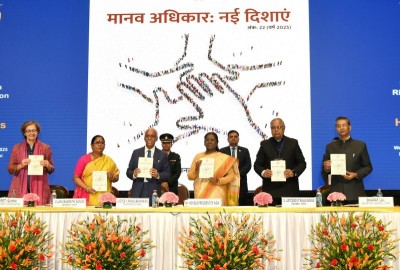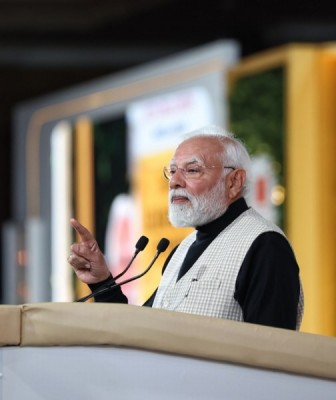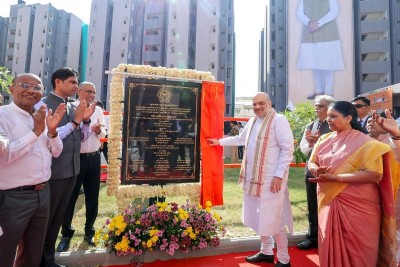
Meghalaya: Prospective Gains
On June 28, 2015, two unidentified Achik Matgrik Elite Force (AMEF) militants were killed during a joint operation by the Army and State Police at Resubelpara in North Garo Hills District. One 9mm pistol and two live rounds and a 7.65mm pistol with three live rounds were recovered from the possession of the slain militants.
These encounters are part of Operation Hill Storm 2, launched by Security Forces (SFs) on April 2, 2015. According to the State Police, between April 2 and June 6, 2015, at least 17 militants have been killed during the anti-insurgency operation. These included seven cadres of GNLA, four cadres of AMEF, two cadres of A'chik Songna An'pachakgipa Kotok (ASAK), and one cadre each of Independent faction of United Liberation Front of Asom (ULFA-I) and Liberation of Achik Elite Force (LAEF). Group affiliation of the remaining two was not known. According to partial data collected by the South Asia Terrorism Portal (SATP), SFs involved in the operation have killed another three militants since June 7, 2015, (data till July 19, 2015). Though Police data did not reveal the number of SF personnel killed during Operation Hill Storm 2, SATP data records four SF fatalities and another seven injured between April 2, 2015 and July 19, 2015.
State Police data further indicates that, between April 2 and June 6, 2015, 25 militants surrendered to SFs. These included 10 GNLA cadres, four ASAK cadres, and three cadres each of United Achik Liberation Army (UALA), Achik National Liberation Army (ANLA), and AMEF. Group affiliation of the remaining two surrendered militants was not known. Since June 7, according to SATP, at least another nine militants have surrendered. These include six GNLA cadres and one cadre each of Liberation A'chik Matgrik Army (LAMA), Hynniewtrep National Liberation Council (HNLC) and United Achik Matgrik Army (UAMA). In a significant incident of surrender, on July 12, 2015, GNLA 'joint political secretary', Benjamin M. Marak and another militant identified as Kenny Roger Sangma, surrendered before Tura Police in West Garo Hills District.
Earlier, SFs had conducted Operation Hill Storm 1 between July 7, 2014, and December 31, 2014. During that phase of the operation, SFs had killed 16 militants [seven GNLA, five ASAK, two UALA, and one each of ULFA-I and LAEF]. Another 24 militants were injured during the operation. The official statement had also disclosed that six Policemen were killed and another 10 police personnel were injured during this period. 973 arms with ammunition, mostly belonging to GNLA, ULFA and ASAK, were recovered by Police during Operation Hill Storm 1. 174 militants of different militant groups active in the Garo Hills region were arrested during the operation, including 55 GNLA cadres, followed by 24 of ANVC-B, 22 ULFA, 19 ASAK, 13 LAEF, 11 UALA, 11 AMEF, eight Achik National Cooperative Army (ANCA), and one each of ANLA and the A'chik National Liberation Co-operative Army (ANLCA). Affiliations of the remaining arrested militants were not known.
These operational successes have indeed helped in providing a relatively secure environment for the civilian population of the State. According to the SATP database, during a period of 12 months and 12 days, since the launch of the operation's first phase on July 7, 2014, the State recorded a total of 19 civilian fatalities. In the corresponding period prior to the launch of the operation, fatalities among civilians totalled 31.
Numerous challenges, nevertheless, persist. The most lethal group, GNLA, which was the primary target of the Operation, still retains the capacity to unleash periodic violence. Significantly, out of 19 civilians killed since the launch of the Operation on July 7, 2014, GNLA was responsible for five in five separate incidents; AMEF was responsible for five in four incidents; while nine civilian killings remained unattributed. GNLA was also responsible for seven of 12 explosions recorded during this period, and for the lone incident targeting Policemen during this period. On March 10, 2015, four Policemen were killed and another two were injured when GNLA militants ambushed a Police team at Panda Reserve Forest in the South Garo Hills District. That the outfit continues to operate is also evident from the incident of May 27, 2015, where nine civilians, including three women, sustained injuries when GNLA militants triggered an Improvised Explosive Device (IED) blast outside a hardware store in Tura town in West Garo Hills District. According to reports, GNLA 'area commander' of West Garo Hills District, Karak Momin alias Hedeo, had earlier served an extortion notice on the shop for INR 2 million. Later, a GNLA militant identified as Junepaul Sangma, arrested on July 7, 2015, confessed that he had planted the IED outside the hardware store.
Apart from GNLA, other militant outfits such as ASAK and AMEF continue to operate, though they are mainly involved in acts of abduction-for ransom, especially in the Garo Hills Region. According to SATP data, in the current year, until July 19, 20 incidents of abduction, in which 30 people were abducted, were reported, as compared to 23 such incidents resulting in 33 abductions during the corresponding period of 2014, clearly not much of a respite. Summing up the situation, Union Home Minister (UHM) Rajnath Singh thus conceded, on July 12, 2015,
In Garo Hills, some new splinter groups were kidnapping and looting businessmen at gunpoint. Such criminal activities must be dealt with firmly. There has been a marked increase in low-visibility yet high-impact violent crimes like kidnapping for ransom and extortions in Meghalaya.
Evidently, insurgency in Meghalaya is at critical juncture. Nevertheless, Meghalaya Director General of Police (DGP) Rajiv Mehta stated on February 26, 2015, "there cannot be any deadline to end insurgency in Meghalaya". He also noted, further, that "there is no new strategy to deal with militancy", adding that the biggest stumbling block to tackle militancy in the Garo Hills was the terrain. The DGP also observed, on April 10, 2015, that the objective of the ongoing operation was the same as that ofOperation Hill Storm 1, that is, to flush out militants from the interior areas of the Garo Hills region.
The ongoing Operation Hill Storm 2, jointly conducted by State Police Forces and the Central Forces, has resulted in limited operational successes, and constitutes a further move towards restoring peace in the State, which has been marred by insurgency for a long period. Nevertheless, if a consolidation of the state's control over remote regions and difficult terrain is to be secured, the capacities and capabilities of the State Police will have to undergo dramatic review and augmentation. UHM Rajnath Singh, stated, on July 12, 2015,
In view of the improved security scenario, there is a need to review deployment of (Central) Forces in the region. Without compromising the security, we must plan to reduce deployment so as to encourage positive thinking among the outsiders about the region... I would urge all the Honourable Chief Ministers to conduct a realistic audit of deployment of Central Armed Police Forces in their States. However, I assure you of our endeavour to help you in the deployment of Central Forces when actually needed.
Meghalaya already boasts of a Police-population ratio of 416 policemen per hundred thousand [according to National Crime Records Bureau (NCRB) 2013 data], well above the national average of 141. The State Police has set up special multi task force, SF-10, to deal with the insurgency, as well as for riot control and initiatives to ensure communal harmony, especially in border areas. 485 candidates have been selected to form this Force, which is to grow in strength to 1,400. The first batch is expected to be raised by February 2016. Over time, greater responsibility for counter-insurgency will be handled by the State Police itself, rather than the present and excessive dependence on Central Forces.
It is not, however, in the use of force that the principal challenge lies. Insurgency thrives in regions of poor governance, in areas where the state has failed to establish a minimal structure of administration and the delivery of public goods. SFs have repeatedly succeeded in beating back the insurgents, in defeating numerous movements of disorder; such successes have, unfortunately, seldom been followed up with concerted action to secure and promote public welfare, and movements of violence eventually recover spaces within areas of neglect and administrative failure. This fruitless cycle will continue, with its enormous cost in human suffering, as long as these deficits endure.
Support Our Journalism
We cannot do without you.. your contribution supports unbiased journalism
IBNS is not driven by any ism- not wokeism, not racism, not skewed secularism, not hyper right-wing or left liberal ideals, nor by any hardline religious beliefs or hyper nationalism. We want to serve you good old objective news, as they are. We do not judge or preach. We let people decide for themselves. We only try to present factual and well-sourced news.







